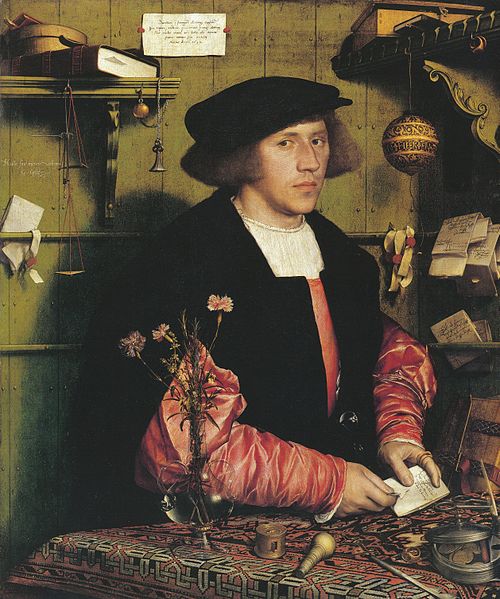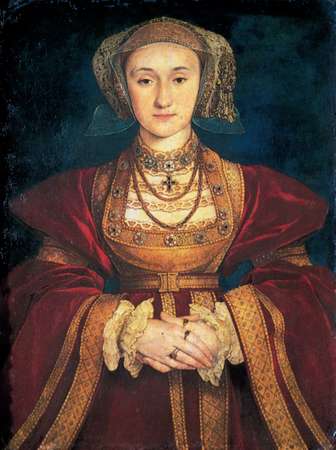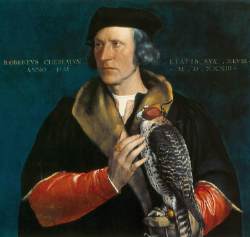Hans Holbein was born in Augsburg, Germany. He took the best aspects of northern and Italian art and made the compositions of his paintings perfect examples of harmony. He made many portraits because artists at the time needed new ways to get work as the Reformation had caused a decline in religious paintings. He was made the Court Painter of Henry VIII and lived in England for two years to paint portraits of the royal household, as he was well known for them. Holbein’s portraits are seen as simple and nothing is done to make them exciting or dramatic, but the rendering of the scene was clearly done with extreme care and accuracy. The objects that surround the subjects of Holbein’s portraits tell a story about their personality and interests. While working as Court Painter, Holbein also designed a variety of items from clothing buttons to weapons.
Holbein’s portraits remind me of the saying “a picture is worth a thousand words” because his portraits are simple but give information about their subjects without being overwhelming or over complicated. He paid special attention to the clothing his subject wore, and included plants and animals as part of the scene. The variety of objects in the scene make me wonder how they relate to the subject Holbein has painted. I enjoy the detailed clothing and the textures he achieved in his work.
Sources:
- Gombrich, E H. The Story of Art. New York: Phaidon Publishers; distributed by Oxford University Press, 1966. Print
- https://www.britannica.com/biography/Hans-Holbein-the-Younger
- https://www.nga.gov/collection/artist-info.1400.html?artobj_artistId=1400&pageNumber=2#biography






Connie,
Very nice work on both Uccello and Holbein. Solid research and personal insights make for pleasurable reading. Keep it up.
Jeff